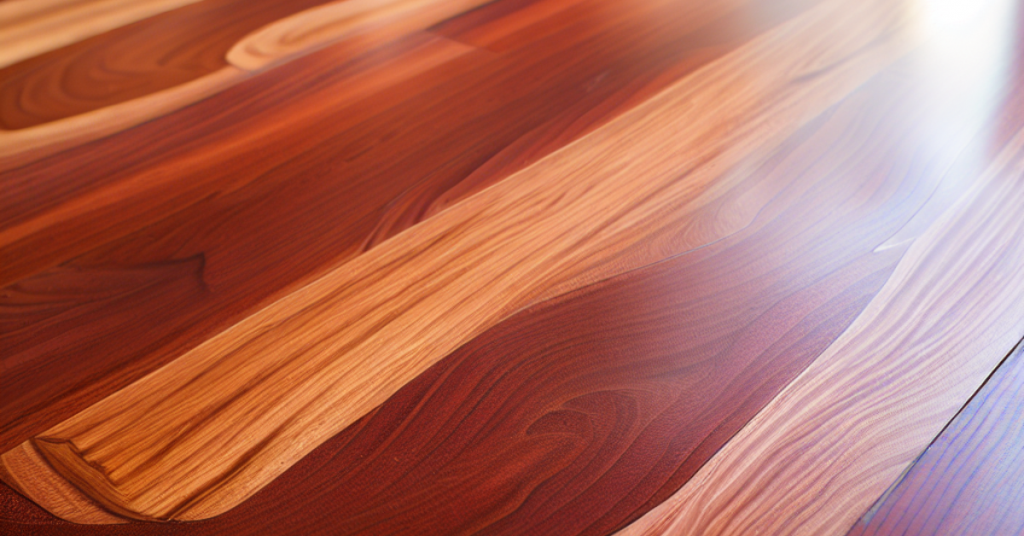Brazilian Cherry is a hardwood commonly found in the rainforests of Brazil. However, contrary to its name, this wood species doesn’t have anything to do with cherries. Also known by names of jatoba, locust, and courbail, It is mainly famous for its attractive deep red color, which makes it suitable for flooring among other things.
There was a time when it was a common choice for home construction. Though it is not as popular today, it continues to remain a top choice. It can be purchased and used in many forms, from solid planks to sawn timber and plastic laminates. Here’s everything you need to know about Brazilian Cherry hardwood flooring.
About Brazilian Cherry Hardwood
It is a reddish-brown colored hardwood often with darker stripes and known for its hardness. It can become darker upon exposure to sunlight. The trees have a light greyish yellow sapwood. It grows in Central America, southern Mexico, northern South America, and the West Indies. The trees are about 30-40 m tall with a 0.6-1.2 m trunk diameter. The wood is quite hard and dense.
The grain is typically interlocked and the wood has a medium texture. It is rated as very durable in terms of resistance to rot, termites and other insects, but can be prone to marine borers. Because of its high density, Jatoba can be difficult to work with, but it turns, glues, stains, and finishes well. It is easily available in a variety of lumber sizes and is inexpensively priced.
The wood is used for flooring, furniture, shipbuilding, cabinetry, turned objects, tool handles, railroad tires, and other specialty items.
Types of Brazilian Cherry hardwood Flooring
When it comes to the use of Brazilian Cherry hardwood for flooring, there are multiple options available to choose from based on price, sustainability, quality, appearance, and your personal preferences.
Solid Hardwood Flooring
Brazilian Cherry hardwood flooring is a great option and the most popular, but it can also be quite expensive. It is available in two standard sizes:
- .75-inch thick and 3.25-inches wide plank boards. These boards come in lengths ranging from a few inches to a few feet.
- .75-inch thick and 5-inches wide boards.
Solid hardwood flooring is the best option out of all because it maintains the premium natural look of the wood, is strong and very durable and can be looked both inside and outside.
Laminate Flooring
It is also commonly used for laminate flooring, which looks absolutely stunning and is the best, cost-effective alternative to solid wood. As you may know, laminate flooring are made of plastic and contain zero wood. So, it may feel a little hard, cold and not as comfortable as solid wood. It is easier to install though.
Engineered Wood Flooring
Engineered wood is a type of manufactured wood that is made by using solid wood and other materials to improve its characteristics and reduce the cost.
Brazilian Cherry engineered wood flooring is a popular choice that falls between laminate and solid wood in terms of strength, appearance and cost. The engineered wood is made by combining thin layers of jatoba and other plywood-type material, which are glued together to form a strong and stable board. This is less expensive and more sustainable (eco-friendly) than the pure wood alternative.
Prefinished Wood Flooring
Prefinished flooring comes ready to install and use and reduces the time on staining and finishing. Because the finishing is done off-site, you also do not have to bear with paint smell or mess. However, this type of flooring can get easily damaged during installation.
Unfinished Flooring
This type of flooring comes unfinished and can be used as it is. It retains the natural pinkish-red color of the Brazilian Cherry hardwood, which is preferred by many over the darker reddish-brown tone achieved through staining and finishing.
Handscraped Flooring
In this type of hardwood flooring, the wood is machine-textured to create the appearance of shallow grooves like in hand-scraped floors popular in classic designs.
Vinyl Flooring
Vinyl is used in place of real wood to create flooring that looks similar to Brazilian Cherry but doesn’t have any real wood. It can be created in many forms and designs, handscrapped flooring, and others. The benefit of vinyl over solid wood is that the former is waterproof.
When selecting or buying Brazilian Cherry wood flooring, you need to consider many things, including the price. If the price is not an issue, solid hardwood is almost always the best option. However, if you are looking for more economic options, there is laminate or vinyl or engineered wood you can choose.
Where To Buy High-Quality Brazilian Cherry Hardwood?
If you are looking to buy top-quality Brazilian Cherry solid wood for flooring, do visit our official website to explore and choose from our wide range of wood species. Cameroon Timber Export Sarl can provide this wood in all standard sizes as well as custom sizes based on your requirements.


